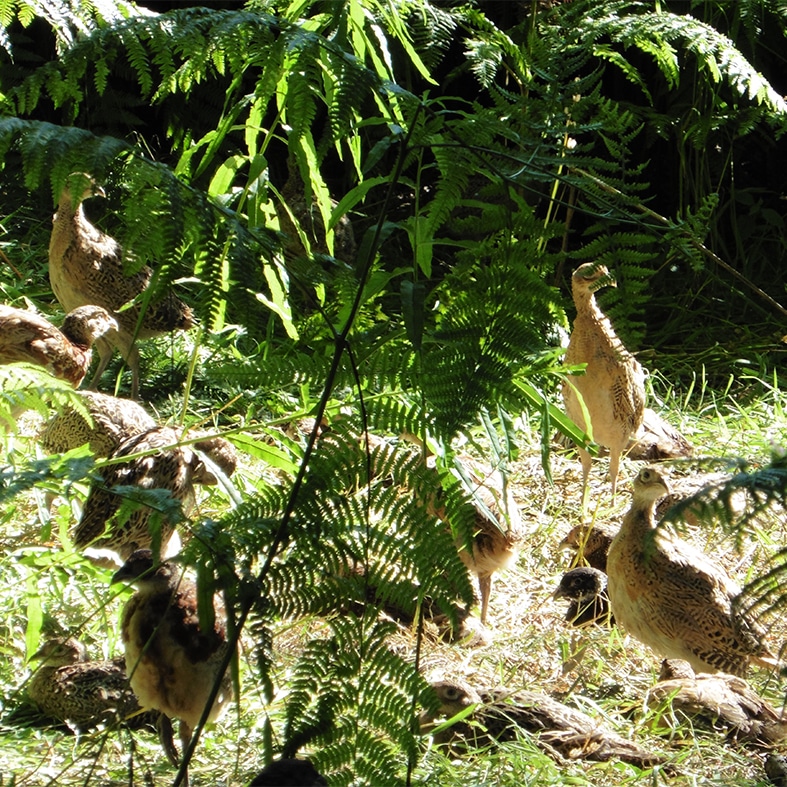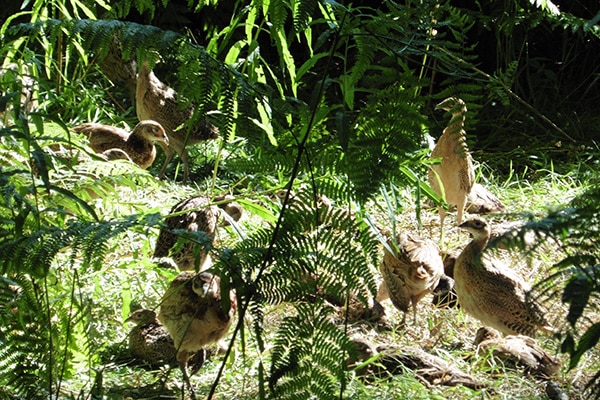
Shooting agreements and consents
Read about shooting agreements, permissions and consents, including links to download template documents.
Get information on the legal shooting season for mammals and birds in the UK.
Learn about our current conservation projects and how you can get involved.
Comprehensive information and advice from our specialist firearms team.
Everything you need to know about shotgun, rifle and airgun ammunition.
Find our up-to-date information, advice and links to government resources.
Everything you need to know on firearms law and licensing.
All the latest news and advice on general licences and how they affect you.


Gamekeeping Stock and poultry advice Pheasant release pen
Pheasant releasing has taken place since the early 1900s but grew in popularity in the 1960s when wild bird populations could no longer support shooting demand. It is now common across much of the UK and it is estimated that one in twelve of all woodlands in England contain a pheasant release pen.
The management associated with the release of pheasants often brings many benefits to the environment. This may include creating new habitat in the form of new woodlands or game covers. Management practices such as coppicing, thinning and ride maintenance enable light to reach the lower layers of a woodland, benefiting many species of insects, birds and plants.
Supplementary feeding of gamebirds can also benefit other farmland birds, while general pest and predator management brings benefits to a wide array of species.
However, release pens need to be well-thought-out and built with consideration for their surroundings to ensure impacts to the environment are minimised and the net impact of gamebird release and associated management is positive for the environment. The Code of Good Shooting Practice provides advice and guidance to shoot managers and is there to help shoots reduce any negative effects while building on the positives.
By following the guidance in this guide, shoots can be confident that their practices are compliant with The Code of Good Shooting Practice.
The following Golden Rules apply:
A release pen should contain a mosaic of three key elements, roughly a third of each:
For pens located in heavily shaded areas, remove trees/branches to create gaps in the canopy. This will allow ground flora to become established.
Other management may include:
The Game & Wildlife Conservation Trust (GWCT) recommends that to avoid damage to habitats, shoots should release no more than 1,000 pheasants into each hectare of release pen (400 per acre or 10sqm per bird).
In sensitive woodlands, such as Ancient Semi-Natural Woodlands, no more than 700 birds per hectare of pen (280 per acre) should be released.
Where shoots exceed the recommended densities, they should be able to demonstrate that their particular circumstances and management regime helps to avoid significant damage to woodland flora and fauna. They might, for example, limit the period of time birds are in kept in release pens.
By law, if you keep 50 or more pheasants or partridges anywhere in the UK, you must register on the Poultry Register.
An electric fence positioned around the outside perimeter of the pen serves as an extra deterrent for predators – particularly foxes.
Two strands of wire about 15-30cm from the ground, and 40-50cm from the pen, supported by electric fence posts every five metres, are recommended. An extra strand may be considered higher up the fenceline where mink or pine martens are present.
Use a brush cutter or slasher and avoid herbicide to clear the ground before erecting the electric fence.
Electric fence units should be set up at least two weeks prior to release with daily checks to ensure no shorting.

Read about shooting agreements, permissions and consents, including links to download template documents.

Current government targets aim to increase woodland cover in order to improve carbon capture, connectivity and biodiversity across the landscape.

Everything you need to know about keeping your stock and poultry safe and in the best health possible.
Sign up to our weekly newsletter and get all the latest updates straight to your inbox.
© 2023 British Association for Shooting and Conservation. Registered Office: Marford Mill, Rossett, Wrexham, LL12 0HL – Registered Society No: 28488R. BASC is a trading name of the British Association for Shooting and Conservation Limited which is authorised and regulated by the Financial Conduct Authority (FCA) under firm reference number 311937.
If you have any questions or complaints about your BASC membership insurance cover, please email us. More information about resolving complaints can be found on the FCA website or on the EU ODR platform.
This website uses cookies so that we can provide you with the best user experience possible. Cookie information is stored in your browser and performs functions such as recognising you when you return to our website and helping our team to understand which sections of the website you find most interesting and useful.
Strictly Necessary Cookie should be enabled at all times so that we can save your preferences for cookie settings.
If you disable this cookie, we will not be able to save your preferences. This means that every time you visit this website you will need to enable or disable cookies again.
This website uses Google Analytics to collect anonymous information such as the number of visitors to the site, and the most popular pages.
Keeping this cookie enabled helps us to improve our website.
Please enable Strictly Necessary Cookies first so that we can save your preferences!
More information about our Cookie Policy